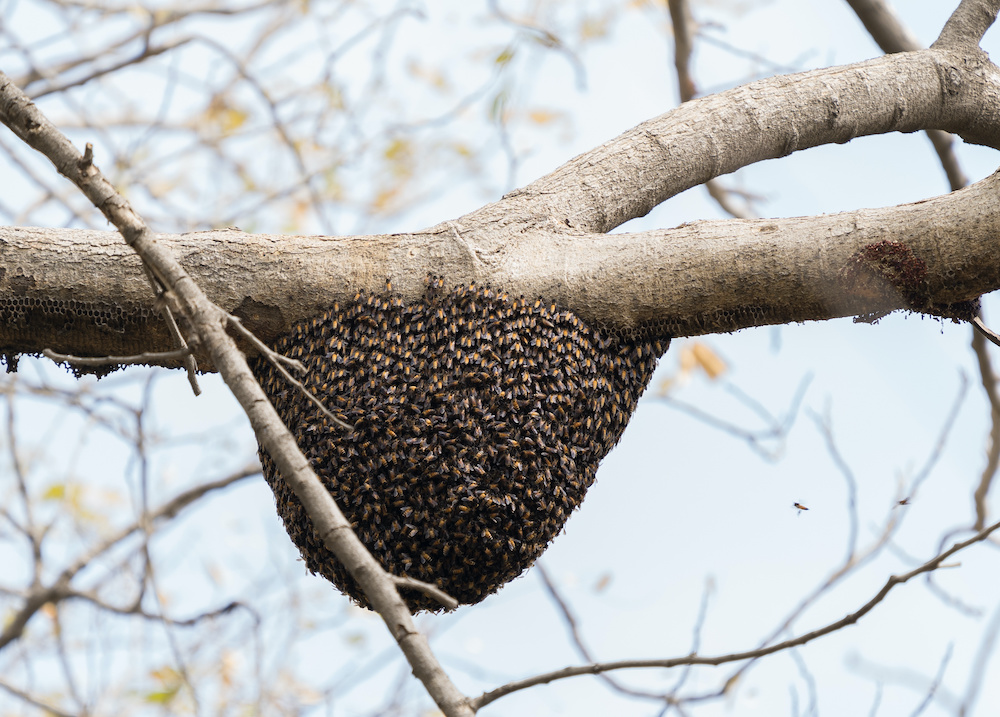Do Bees Hibernate in the Winter?

Honey bees are common sights in the spring and summer months across the San Diego area. But have you ever thought about where they go in the colder winter season? While we don’t get frigid temperatures here in Southern California, temperatures do tend to dip down quite low in the late fall and winter months.
Bee hives don’t come equipped with cozy blankets and high-tech heating systems. Instead, honey bees have to rely on each other and a bit of ingenuity to keep warm and survive the cold temperatures.
Warm Weather Bee Behavior
In the warmer months of spring and summer, every bee in the hive is hard at work performing their assigned duties. The queen bee stays busy reproducing, while the worker bees do much of the heavy lifting around the hive. Workers can act as nurses, cleaners, honeycomb makers, morticians and foragers, just to name a few of the many roles they hold in the colony. Drones also play a pivotal role, even if they generally contribute little more than their DNA.
In the busy season of a bee colony, the bees work together to collect food and water, care for the young, clean the hive, build new cells and maintain the ideal conditions within the hive. Warm temperatures require the bees to work together to keep the hive cool. Water collected by the worker bees is fanned by the wings of other worker bees to create cool conditions inside the hive. In the winter time, the bees also must work closely together to control the air temperature.
Cold Weather Bee Behavior
After the food supply begins to diminish and the work of the busy season comes to a close, honey bees will head back to the hive to hunker down for the winter. If they worked hard enough in the summertime, they should have plenty of food stores to keep them alive during the season. Any remaining drones will soon be evicted from the hive so as not to waste any precious resources on these less-than-productive members of the hive.
To keep warm, the worker bees will huddle up into a tight cluster around the queen. They will squirm and vibrate to create heat, even getting the center of the cluster to temperatures as high as 100 degrees Fahrenheit. As the temperature changes, the cluster can expand and contract to adjust to the needs of the colony. For example, if it gets too warm inside the cluster, the outer layer of bees will expand to allow more air flow inside. When temperatures dip too low, the outside layer of bees will contract to reduce air flow inside the cluster.
The cluster of bees gradually makes its way around the hive so they can access the reserves of honey housed in the cells. Typically, this is done when the temperatures in the hive are on the higher side and the bees are not actively conserving energy.
Honey Bees Survive and Thrive
Honey bees are truly amazing creatures. Like so many other species, they have developed ways to adapt to their environments and survive. When the weather gets cooler, honey bees seamlessly work together to maintain the hive and protect each other by forming a tight cluster around the queen bee. Then, after the cold season is over, they can regroup and get back to work preparing for the next winter. Honey bees are a great example of how organization and teamwork can create a successful and thriving community.
If you have questions about honey bees or need help ridding your San Diego home or business of a pesky honey bee infestation, contact the live bee removal experts at D-Tek Live Bee Removal today. Our team is standing by to help you safely and humanely remove bee hives and swarms from your property.
